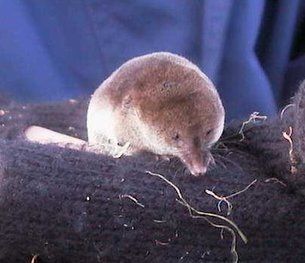

A new survey of small mammals in Jersey has failed to find out how populations of shrews are faring on the Island.
The £22,787 study, by Natural Solutions, compared numbers of four species of mammals over 16 years.
While wood mice and Jersey bank voles continue to be widespread, researchers could not capture enough lesser white-toothed shrew and millet’s shrew to assess numbers.
Vole and the two shrew species are protected under the Conservation of Wildlife (Jersey) Law 2000.
The report looked at population numbers, densities and biomass over different seasons at 22 sites in nine different habitats across the island.
Each site was surveyed over a period of a week in both spring and autumn 2014 to monitor pre and post-breeding populations. Animals were weighed, sexed and breeding status determined while their fur was clipped to identify them if they were caught again.
Researchers caught 2,300 animals in 9,065 trap nights. Animals were present in 14 of the sites in either spring or autumn, indicating the possibility of a transient population.
John Pinel, Principal Ecologist at the Department of the Environment said: “We are delighted with the results of the study and its something we will be looking at repeating again in the next 10 to 20 years. We would have done this earlier but struggled to get the resources.
“It's very interesting to get the results and to be able to compare them to those from the previous survey although they appear to show that bank voles are down in number, shrews are up and the number of wood mice is the same. The study identifies inconsistencies for animals in different habitats across the island and it's a sample so you are never going to get 100% results on this sort of scale.”
Shrews were only found in semi-natural habitats such as dunes, heath lands and undisturbed grassland, plus woodland, and were found in much lower densities than vole and mice.
John added: “There are a number of reasons for the shrews to be more elusive. Shrews are very small, cryptic creatures that don't travel very far. Voles are about four times their size and get much further so they are more likely to encounter the traps. The shrew's habitat is quite patchy too, and as they are hunted by birds of prey and cats, they are very cautious, especially at night.
“Shrews might be living quite near a trap but won't necessarily venture towards it. The data is a true representation, although shrews could be more abundant than it shows.”
The report recommended that the Department of the Environment should develop a strategy and action plan which includes island-wide surveys of small mammal populations every four to eight years.
Comments
Comments on this story express the views of the commentator only, not Bailiwick Publishing. We are unable to guarantee the accuracy of any of those comments.